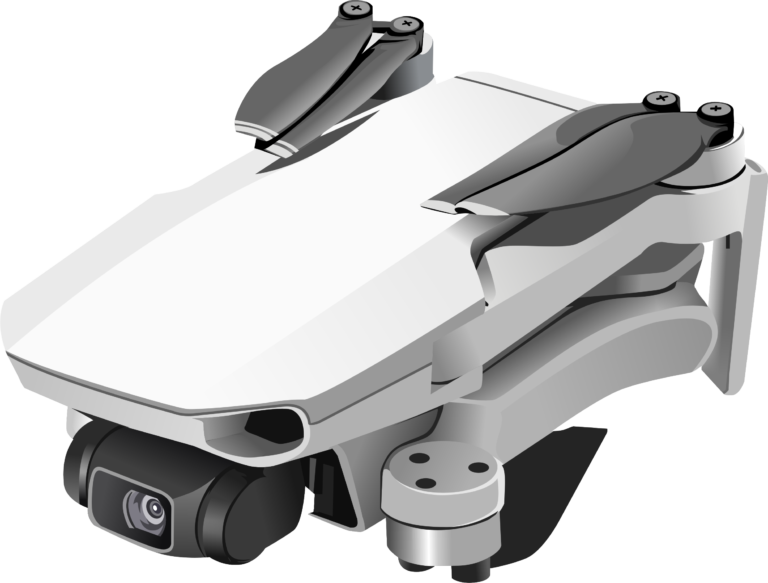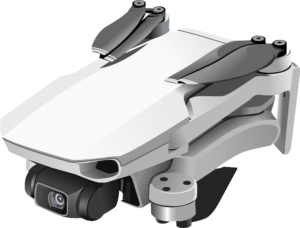DJI Mavic Mini Review
How does DJI's most portable drone stack up?
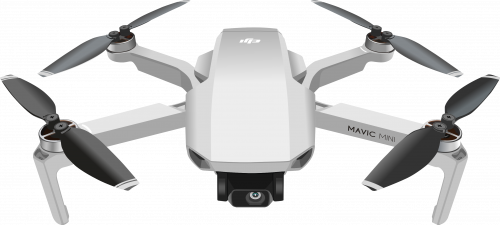
Disclosure: If you make a purchase through our links, we may receive a commission.
The DJI Mavic Mini is among my top picks for entry-level drone videography and photography and is ideal for beginners. This drone might not be the most robust for high-end, professional photo, and videography. However, it’s a fantastic option for a portable, fold-up, compact drone.
To save on weight, the Mavic Mini has no obstacle sensors. So, practicing with your flying skills is necessary if you’re new to flying a drone. You run more risk of crashing this little thing, but drones used to lack the collision sensors they do now, so it’s certainly possible to operate the Mavic Mini without incident.
For such an ultralight camera drone with a compact design, the Mavic Mini still provides a lot of stellar features. This drone has a flight time of up to 30 minutes and a stabilizing three-axis gimbal, which allows you to capture high-quality videos or photos without shaking or vibration interference.
If you’re new to drones and feel a bit lost while looking around at brands, it’s worth knowing that 80 percent of the drone market in the U.S. is DJI, so the brand is quite reputable. If you’re a pure hobbyist and don’t need the most expensive model out there, the Mavic Mini is one to consider.
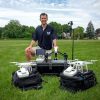
Updated: 9/12/20
Quick Highlights
- Compact and portable
- 30-minute flight time
- 12MP aerial photos
- 2.7K HD videos
- 4km HD video transfer
- 3-axis gimbal
- Vision Sensor + GPS Precise Hover
- Simplified recording and editing
Mavic Mini Overview
Key Features
2.7k Camera Sensor
QuickShots
Ultralight
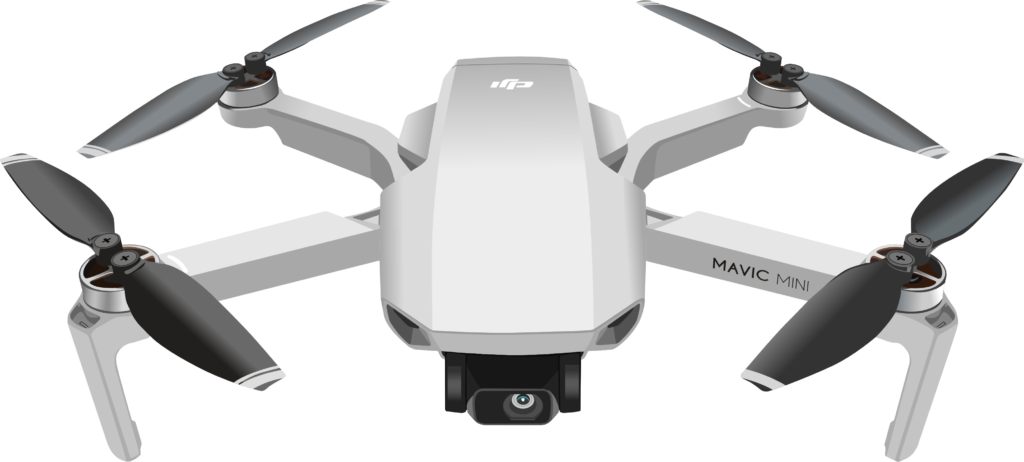
Easy to Use
The walk-through on the app should be sufficient for most people, but if you want to get more in-depth knowledge, you can find lots of videos on YouTube with tips and tricks.
As long as you have a smartphone with which you can pair the controller, you can download the app and get your drone flying in no time. You don’t even have to wait to register the Mavic Mini with aviation administrations in the United States, Canada, or Australia because of its lightweight design.
Extended Flight Time

Size & Design
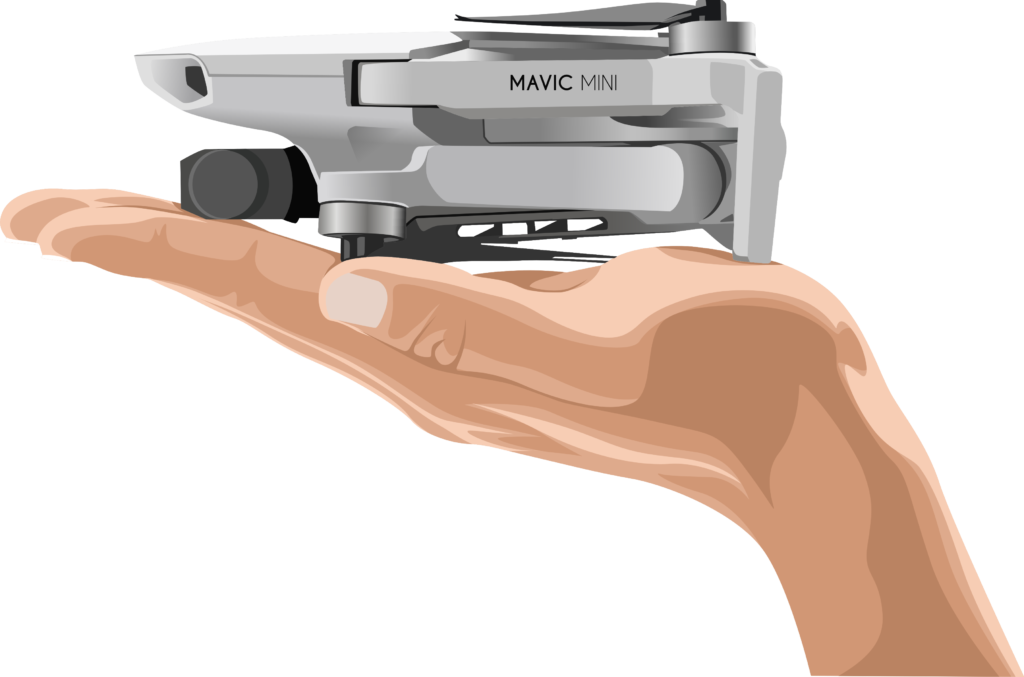
DJI engineered the Mavic Mini to weigh just under the requirements regulated by the United States in which you must register a drone with the FAA, which is 250 grams. The Mini weighs 249 grams, so you are not required to register this handy little drone. It’s also worth noting that the Mini is less than half the weight of the Mavic Air 2. In contrast, the Air 2 totals 570 grams, or 1.26 pounds.
This lightweight design required the omission of a few key elements, such as collision sensors. So, you have to decide if you’d prefer to perfect your skills to fly without them or go through the process of registering a larger drone.
The Mavic Mini has a removable battery, and you change it out in the tail end compartment. A microSD card slot, as well as a micro USB port, are also part of the design.
The size is a significant selling point for many users, and this ultra-portable drone folds up the arms to become a palm-sized, compact device that travels easily. Though the Mavic Air 2 can fit in a bag, the Mini could even slide into your pocket.
Compact Controller
The remote is smartphone-ready, with clips to attach it to your phone as you use the DJI Fly app. You get the remote control as part of the package, along with lightning cables, a USB-C, and micro USB.
The Mavic Mini remote utilizes joysticks, which you can remove when you pack it away for more compact storage. The remote has a button on the left side, which allows you to record videos, and to capture a photo, you also have a button on the right side.
On the remote itself, you can adjust the pitch with a control wheel. To adjust brightness, you must use the Fly app, which is a slight downside compared to the more expensive Mavic drones. Even with the remote, you still have to utilize the DJI Fly app to watch the camera view.
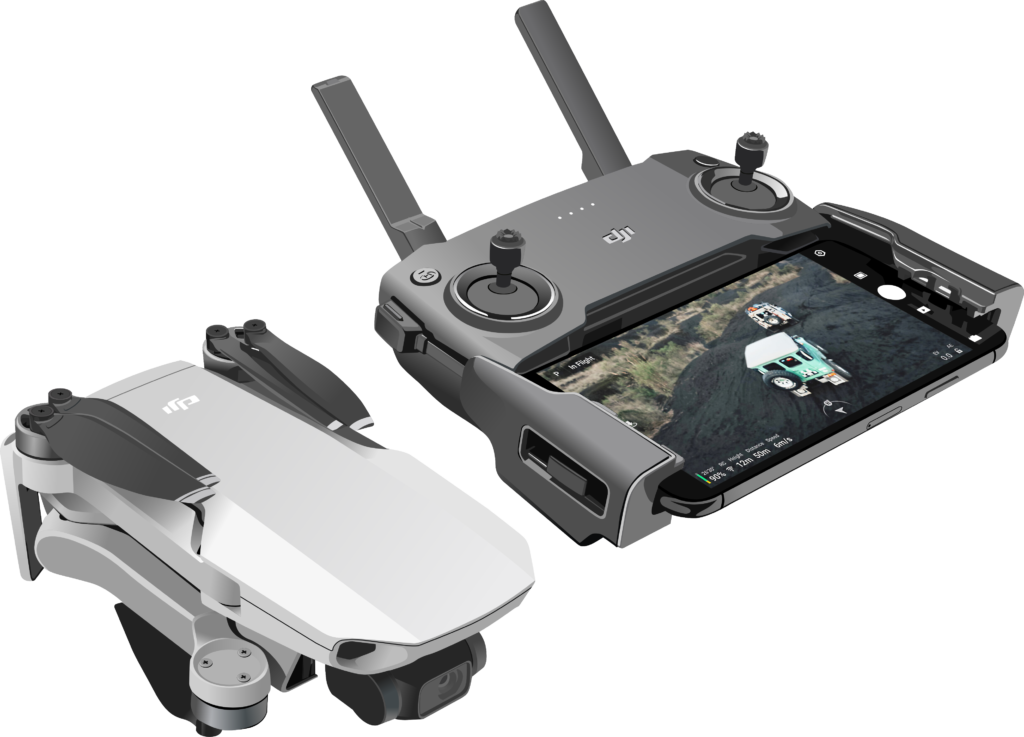
Flight Performance
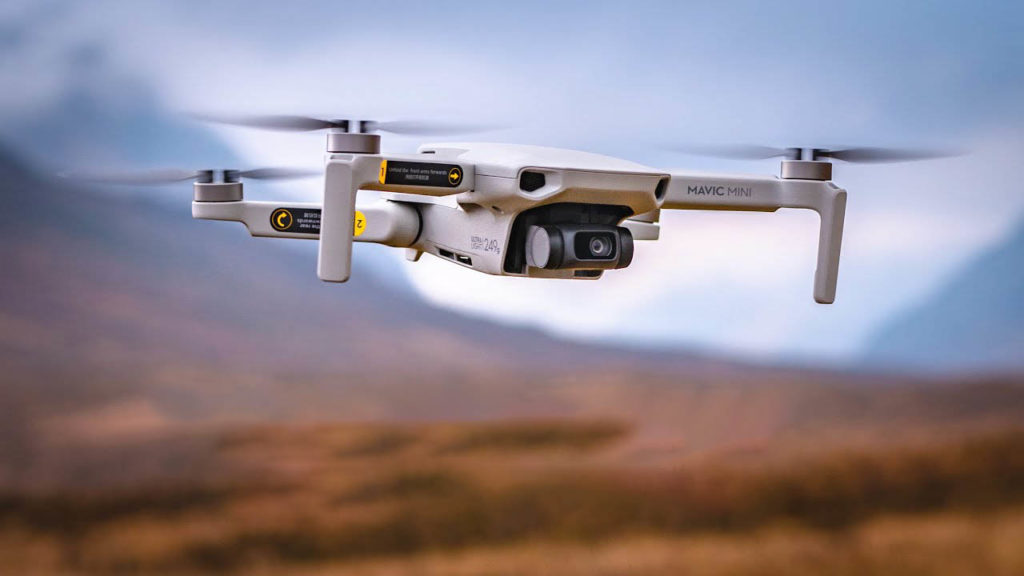
The Mavic Mini has a max speed of 13 meters per second (m/s) in Sport or S-mode, 8 m/s while in Position or P-mode, and 4 m/s when in Cinematic or C-mode. This drone can hold its own fairly well in windy conditions for such a small device.
The Mini has a wind speed resistance of 8 m/s (scale 4), and when tested on a windy day, it wobbled a bit but could hover in place pretty well. The Mini has Gimbal stabilization, which helps in windy days.
The DJI Mavic Mini also has a video transmission range of 2.28 miles (or 3.8 kilometers). If the wind is not a factor, this drone has a height range of an impressive 3.1 miles above sea level (9 km).
Camera
A drone’s camera is one of the most important features. The mavic packs a 1/2.3 inch CMOS 12mp camera sensor . It’s a smaller camera than the Mavic 2 Air and only goes up to 2.7k for video rather than 4k. While not ideal for professionals, 2.7k is often enough resolution for most amateurs.
The camera captures still images in JPEG format, but not RAW. However you can still capture great high quality footage.
The camera is simple and easy to use. Though you sacrifice some quality for portability and price, the Mavic Mini’s camera should be a great fit for most users.
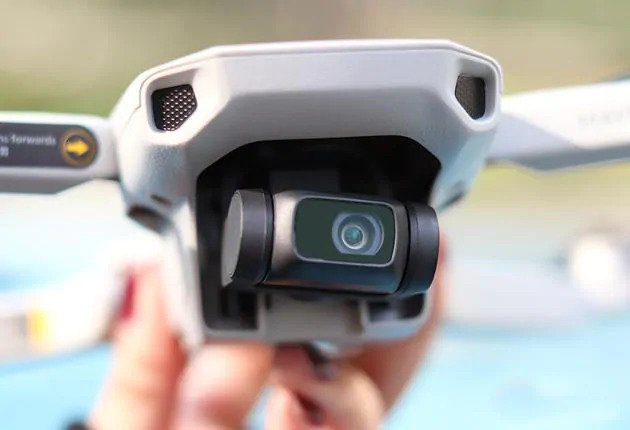
Battery
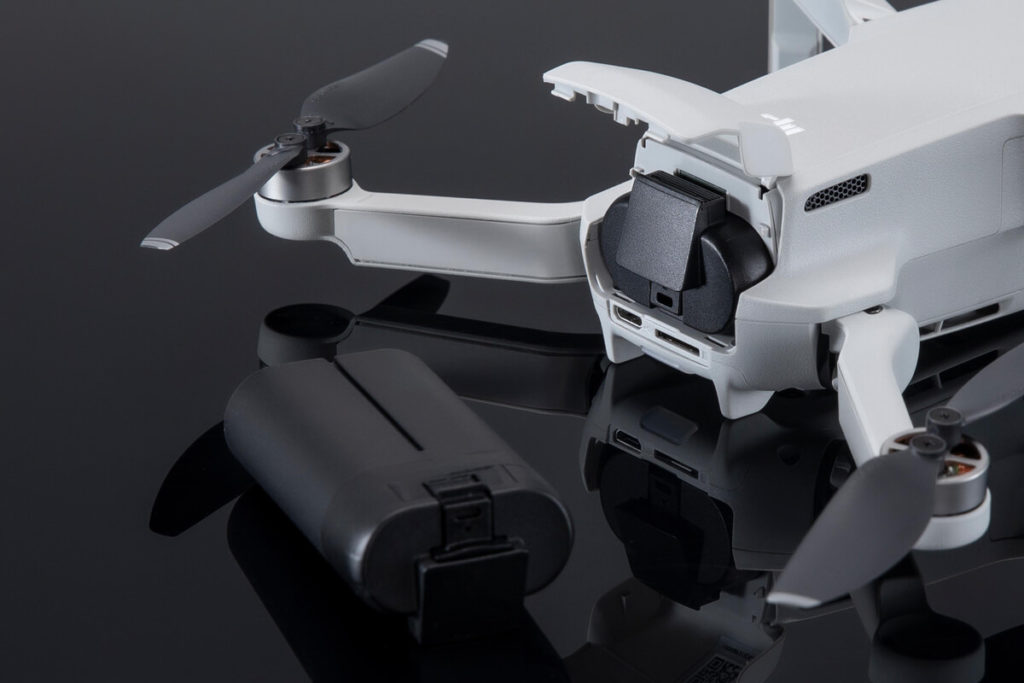
The Mavic Mini has a solid 30 minutes of operation time with its 2600 mAh battery capacity. The Mini has an operating voltage of 1200 mA 3.6 V with androids, and 450 mA 3.6 V on iOS.
The battery life will inevitably be a bit less if you fly the Mavic Mini in windy weather or with a propeller guard. In that case, you’re more likely to get about 20 to 25 minutes of battery life. Overall, you still get more battery life from the Mavic Mini than the Spark.
Being connected to Wi-Fi or not can affect the range. On Wi-Fi, it sometimes disconnects from the remote around 60 to 65 meters. You can put your phone on airplane mode to get a much farther range. On airplane mode, you can get a substantial amount beyond two miles of range (maxing out at two and a half miles).
Safety
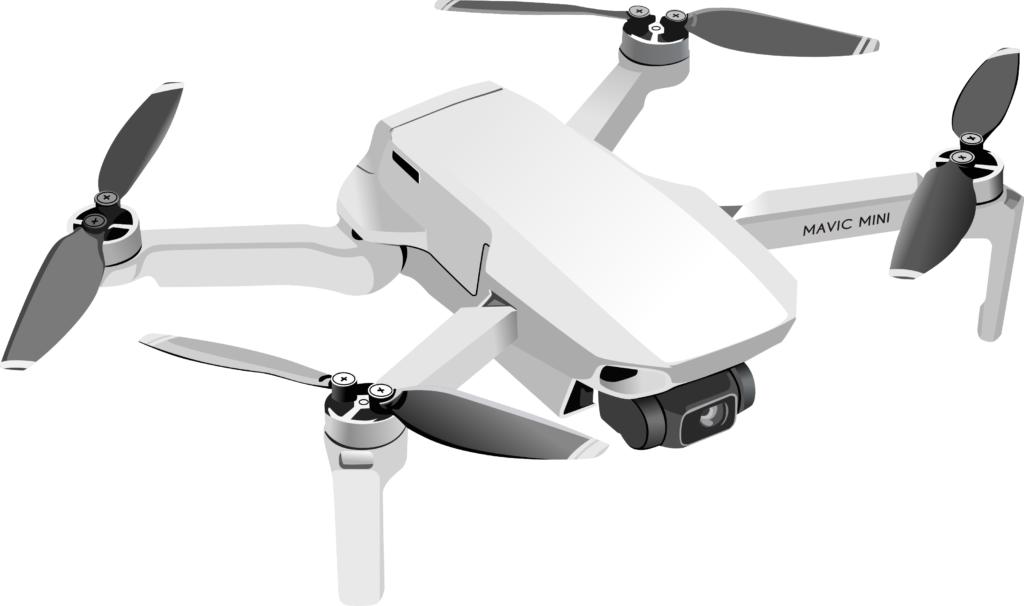
You don’t have to register the Mavic Mini with the FAA thanks to its minuscule weight. Even so, you want to use caution, as with any drone, around power lines, homes, trees, and any potential flight path. Keep in mind; it’s not legal to fly close to airports or above 400 feet.
Not only do you need to be careful to prevent accidents for those around you, but without the collision-prevention sensors, you could end up losing hundreds of dollars quickly.
The Mavic Mini is so compact that it gets challenging to keep track of by sightline alone. If you’re not careful, you can lose this drone quickly or collide with higher objects that could damage the device. Without the sensors and considering how small this drone is, it does not rank highest on my list of safe drones.
Two key elements do boost the safety of Mavic Mini, though. You get a feature that prevents takeoff if the GPS signal is not robust enough (less than 8). You can disable this through the Fly app with the v1.0.4 or later versions.
The other feature requires calibration of the compass in situations where the outside light is too dim, or there is interference with the compass.
DJI Fly App
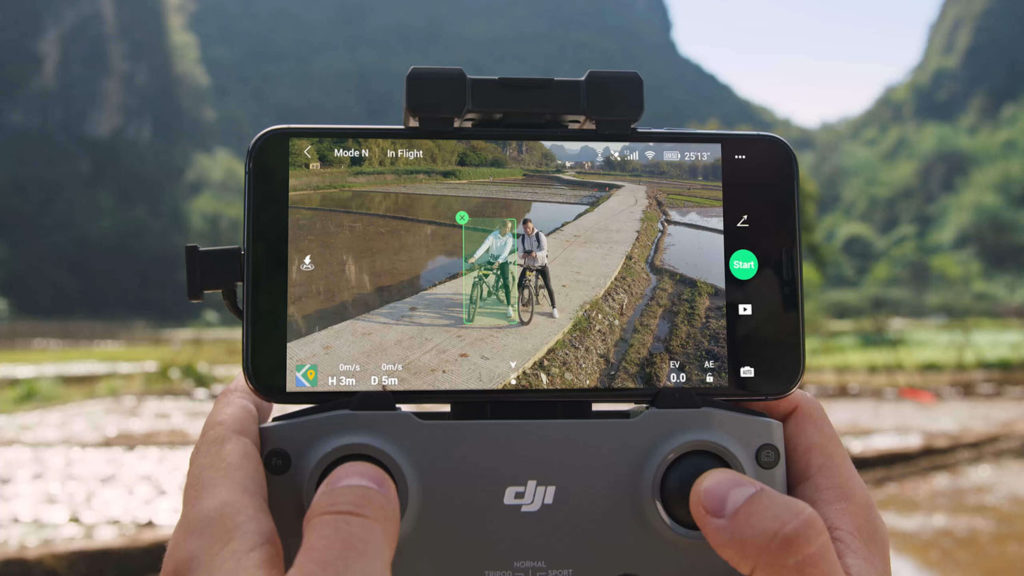
You need to use DJI’s Fly app to view the camera on the Mavic Mini, but for anyone with a smartphone, this is a pretty intuitive system. You can get your hands on lots of tutorials, and the app itself has plenty of tips to help.
There are some glitches in the Fly app, such as specific features coming up in Chinese (hopefully something that will get updated soon). A significant drawback is that the safe Fly Spots are only highlighted in China.
Other than a few metaphorical blind spots in the app, there are loads of premium functions. You can do pre-programmed “Quickshot” flight paths, choose from three speeds or modes, and adjust camera elements, although you don’t get to alter some things like saturation.
Additional Options
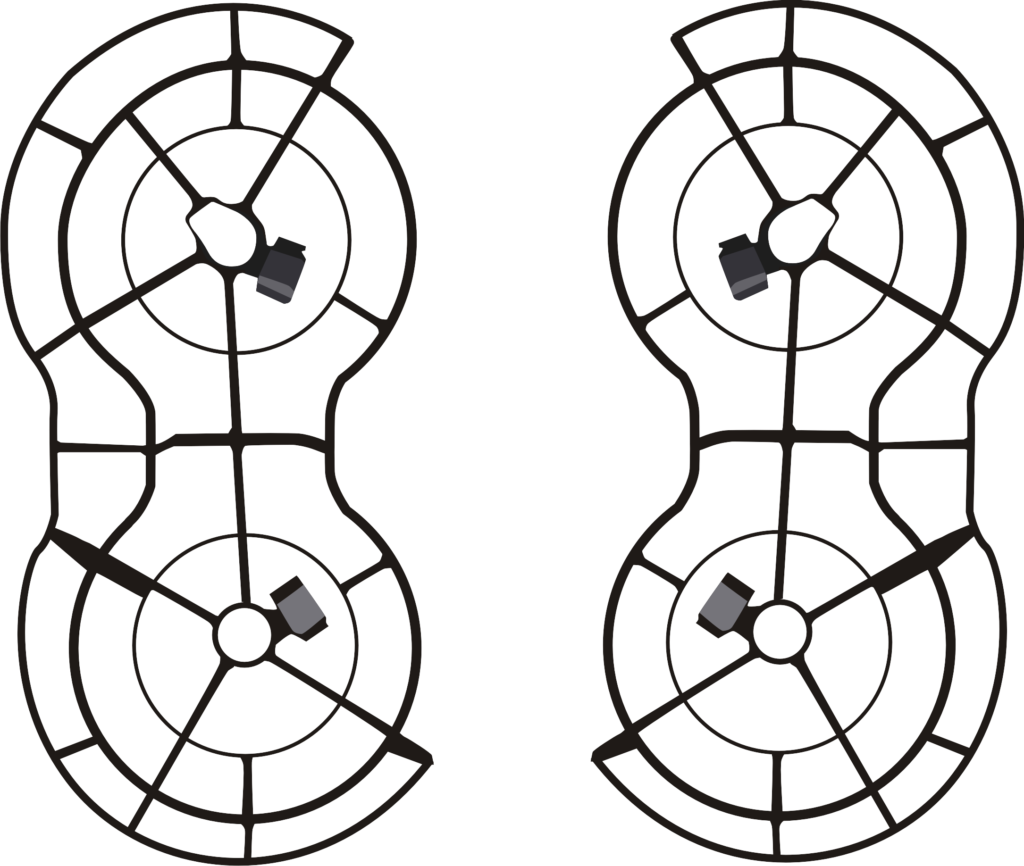
360 Propeller Guards
DJI offers 360° propeller guards to shield the propellers, which in turn helps improve the safety of your drone. These guards can help with stability as well as with indoor flight or propelling your drone around outdoor obstacles. While the flight time will be reduced to around 18 minutes with the guards on, they can help prevent your Mini from being blown into objects.
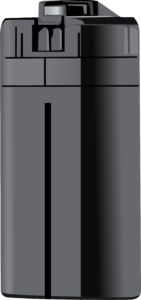
Extra Batteries
With the Mavic Mini, you get an Intelligent Flight Battery (li-ion 2S) with a capacity of 2400 mAh and 7.2 volts. The maximum charging voltage is 8.4 V, and the max charging power is 24 W. Additional batteries are available for around $45. You can also opt for the Fly More Combo, with which you get three battery holding facilities in the package.
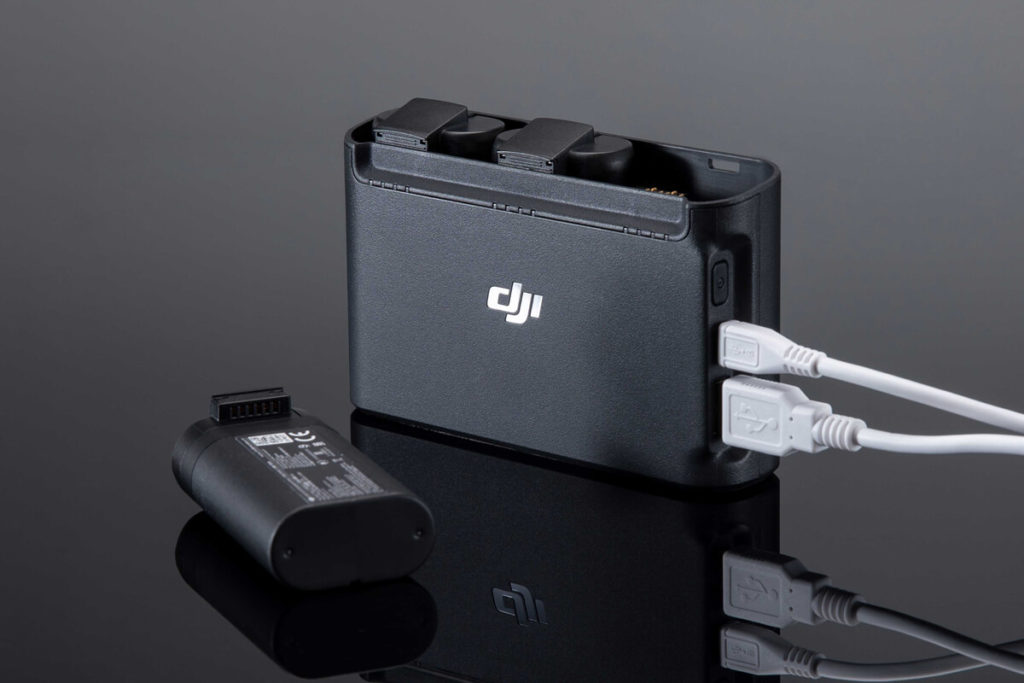
Charging Hub
With the Mavic Mini, you get the Intelligent Flight Battery, which takes roughly 90 minutes to power up with the “quick charge” 2.0 18 W USB charger. Conversely, you can juice up the available 1100 mAh battery in just 50 minutes. There is also an LED indicator to provide you with the status of the Mini’s battery.
Mavic Mini vs Mavic Air 2
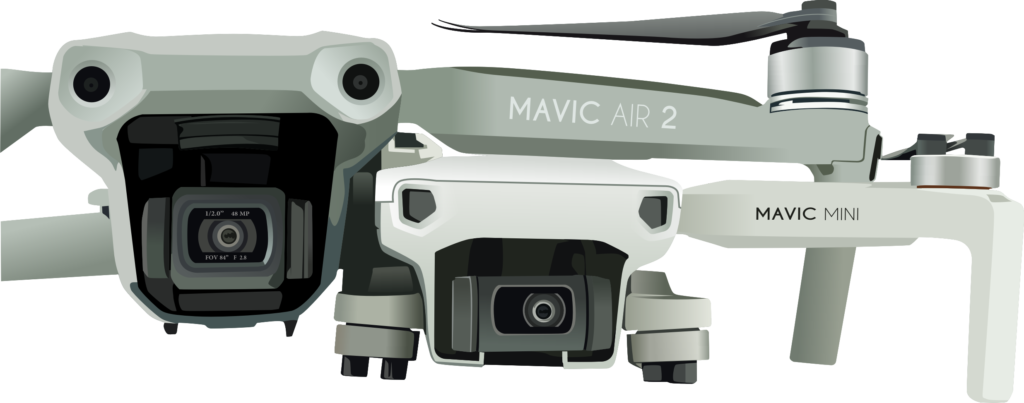
The cost is, without question, a significant difference between the Mavic Mini and the Mavic Air 2. The Mavic Mini comes in at $399 retail in the U.S., while the Mavic Air 2 has a price tag of $799.
The flight time does not make up for the cost difference between these two models. The Mavic Air 2 has a maximum flight time of 34 minutes without wind, which is pretty close to the Mini’s 30 minutes. The quality of the video is where you will start to see the difference.
The Air 2 also captures 4K fps video, as well as 2.7K and 1080p, but the Mini has no 4K capability. The Air 2 also has HDR panorama and 8K hyperlapse with four different modes for professional shots. For photos, the Mavic Air 2 captures RAW images, but the Mini does not. You also are not provided with any internal storage with the Mavic Mini, but you get 8 GB with the Air 2.
You only get a downward vision system with the Mavic Mini, but you get backward, forward, side views, downward, and even upward with the Air Pro. You also get obstacle sensors for collision avoidance with the Air 2, but with the Mavic Mini, your flying skills are all you have to prevent an accident.
Yet again, there is a $400 cost difference between the two. Will you get better video quality with the Mavic Air 2? Without a doubt. Do you need the Air 2 if you are only taking videos for fun in your leisure time? No. For a beginner or casual hobbyist, the Mavic Mini will usually be the way to go.
Mavic Mini FAQ
Yes, you can use the Mavic Mini with an iPad Mini. In fact, you get the benefit of a larger screen and a more spacious configuration on the DJI Fly app.
Not only can you use the Mavic Mini with an iPhone, but you also need a smartphone to operate the controller. The Mavic Mini is compatible with all iPhone models since the iPhone 6 and newer.
Yes, the Mavic Mini is ideal for beginners. The number of tutorials and ease of the app walk-through, the Mavic Mini is excellent even for those who have never before tried out a drone.
The standard maximum height for the Mavic Mini during flight is 120 meters. You can increase this to 500 meters when you go into the settings in the DJI Fly app. Your takeoff altitude must be 3000 meters or lower, and the Mavic Mini has a maximum ascent speed of 4 meters per second (m/s) in S-mode, 2 m/s in P-mode, and 1.5 m/s in C-mode.
DJI Mavic Air 2 Videos
Check out some videos showcasing the Mavic Mini and its high performance camera:
Final Thoughts
The DJI Mavic Mini does an excellent job of bridging the gap between cheap (sometimes poorly made) drones and overly-expensive, high-quality, professional models. The Mavic Mini runs around $399 in the United States, which isn’t the lowest budget drone out there.
However, the quality of DJI is part of what makes the brand so popular, and you still get decent quality, stable footage, or pictures with this easy-to-use device. For the price, the Mavic Mini is one of the best compact, ultralight drones on the market.
Quick Highlights
- Compact and portable
- 30-minute flight time
- 12MP aerial photos
- 2.7K HD videos
- 4km HD video transfer
- 3-axis gimbal
- Vision Sensor + GPS Precise Hover
- Simplified recording and editing

